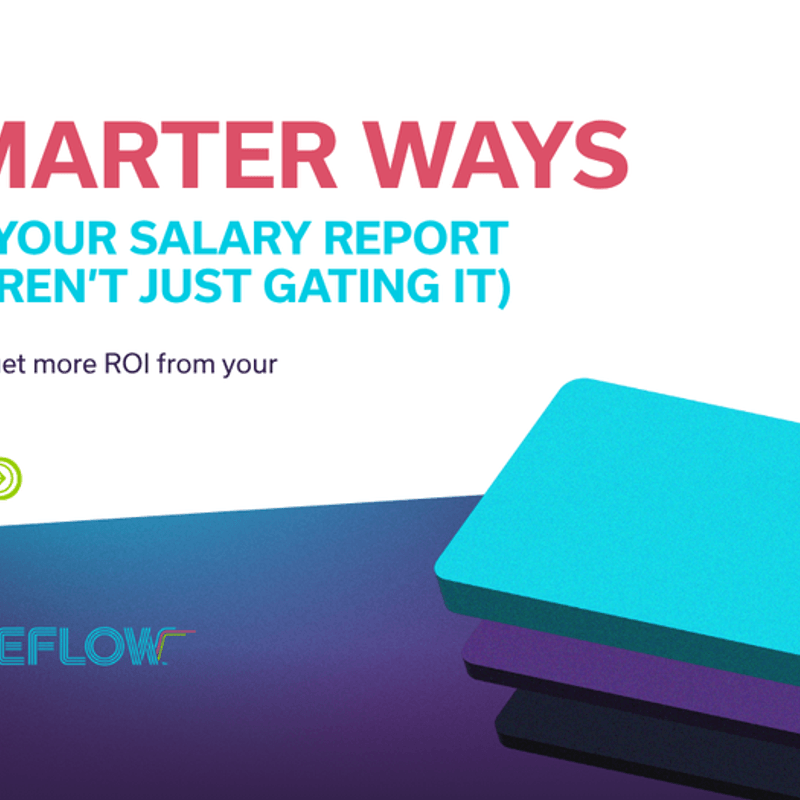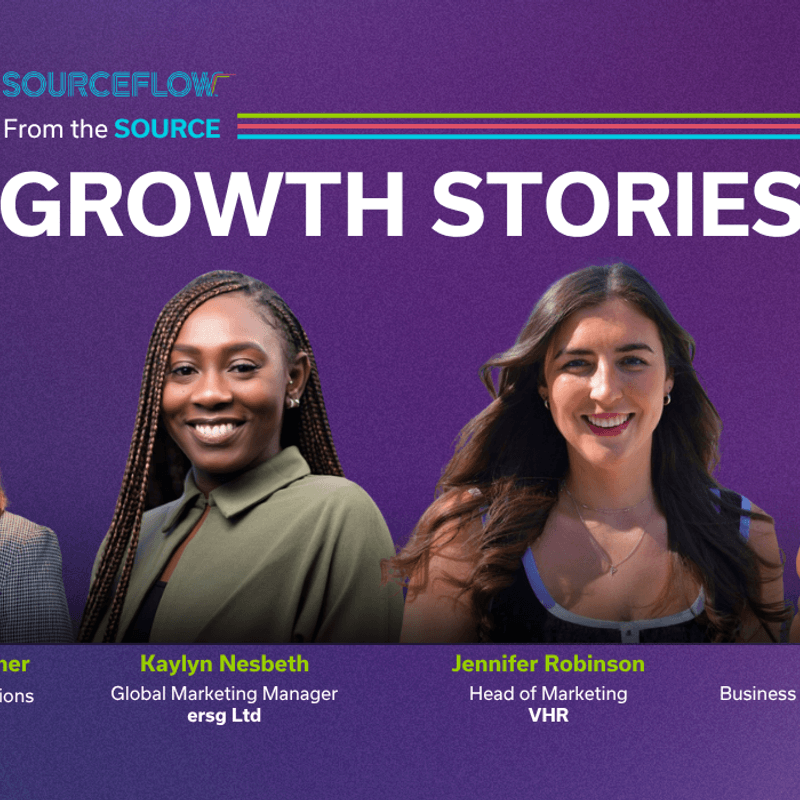
ROI - 7 website design trends for 2022

Share
Introduction
2022 brings with it the opportunity to finally establish new design principles based upon the upheaval and step change of the past 20 months.
Recruitment websites have largely become formulaic, however, with the increase in competition, shortage of candidates and striving to differentiate, the move to custom design (and away from templates) will be a key trend moving forward, especially for agencies looking to lead the industry.
I’ve detailed 7 predictions on the types of design trends we will see in 2022 below but note that these are not exclusive and I’m sure we will start to finally see agencies pushing the bounds of design creativity in the next 12 months.
Large typography on clean hero images
A trend that became increasingly popular over the last few years was bold, animated or video filled hero images at the top of websites. This trend saw smaller image overlay text and typography that tried to complement the often overbearing imagery or video being used on website.
The hero image is the first image (or area, specifically) that a user typically sees when visiting a website. Specifically, hero images are the top area of the homepage of a website and therefore takes up a material amount of the users ‘gaze’ attention, somewhere in the region of 45-50% of the overall scroll time of a homepage.
A study revealed that web users only take 50 milliseconds or 0.05 of a second to form an impression of a website, so the content of the hero image section is crucial to engaging and ultimately converting as user.
As recruitment businesses struggle to differentiate and engage digitally with candidates and clients, simplifying the hero area and removing clutter will become an effective way to increase the time-to-message with users.
Rejection of minimalism
At the risk of being counterintuitive to the first point, I expect to see the ‘super clean’ minimalist website phase out in 2022.
Everyone wants a clean website. Over the thousands of recruitment websites I personally have been involved in, nobody has ever requested a cluttered, confusing website, full of text, there’s always time though...
Minimalism has led to an abundance of uniform, consistent, and frankly bland websites. There’s nothing wrong with being clean, but when the trend is to copy what everyone else is doing, standing out becomes almost impossible.
Bold, vibrant colours with great use of DIY imagery could be big in 2022, simply for the fact that it will help to create a memorable website experience for users. I’d consider looking at ‘Memphis Design’ styles from the 1980’s (think Miami Vice) and potentially the Brutalist design movement from the ‘50’s, ‘60’s & ‘70s as a starting point for design inspiration.
Location based design focus
Since March 2020, we’ve all spent a lot more time at home. As the world is (hopefully) reopening, travel is still a commodity and most of us are still spending a huge amount of our time in the area we live in.
I’d expect to see websites focusing on this way of life in 2022. Recruitment brands with a single base in a city should be looking to capitalise on this location expertise by incorporating the heart and soul of where they operate into their designs.
If you’re based in Liverpool for example, there’s a raft of design inspiration from the Beatles, the world famous waterfront and the world of sport to take advantage and add into the mix of your website design. Cityscapes might not be everyone's taste, so get creative with different elements.
If you’re a national brand with local offices, structure the website to serve up local office pages that speak to the users in those regions. It might be hard to do this on the homepage, so think big (and spherical, websites are three dimensional and so is your marketing) and build a website that drives local content to local people.
A word of caution. If you recruit nationally but have a single office, tone down the location focus. You want to give a sense of your brand personality and tone, rather than appear geographically ‘locked’
ScrollyTelling
ScrollTelling (a real word that unfortunately I didn’t make up) is becoming more and more popular and I personally haven’t seen it used in recruitment websites yet.
Essentially it's the practice of positioning a piece of content using text, imagery, animation effects, video & audio in combination to make it more engaging than simply text or a downloadable document.
One of my favourite examples is how the BBC use ScrollyTelling to present complex stories on their website. For example this article about the gender pay gap is beautifully presented, making an article with 15,000 data points easily engageable and visual.
In recruitment, I see a lot of reports, white papers, articles, salary surveys etc that are still presented in PDF format, behind download walls. I see this as something that will become more antiquated with the speed in animation enhancements.
Imagine a salary survey that you input your data into and are then returned with a specific landing page that as you scroll, presents the data through animation, has video of your team discussing the specific results and perhaps presents jobs you are recruiting for that match the type of job that’s being looked at.
Dynamic, personal content experiences
Websites are far more than just static objects. I’d expect to see 2022’s website trends deliver a much more one-to-one connected experience for users.
Chatbots and conversational tools for example should start to see more traction this year and how they are served up through the website should start to change. Popups in the corner of the screen might not be cutting it for you (or for anyone), but how about taking over part of the screen on a job listing to create a direct communication channel on page between candidate and recruiter? This type of personalised experience will become the backbone of ‘The Metaverse’ that we will see more of this year and will separate value add businesses from the rest of the field.
Serving up content also doesn’t need to be static, job listings should be easily attached to relevant blogs or articles on a website and likewise, content from the website should be served up to candidates and clients via email/dashboards.
One of the big trends I’d expect to see more of in 2022 is how content can provide a connected experience. For example, WhatsApp hasn’t been capitalised on in recruitment to delivery content, jobs and as a data collection method, despite having 40.23 million users in the UK. This untapped content communication channel can be a game changer for recruiters and their websites.
Gender Neutral, Safe Space Design
Gender Neutral Design
Stereotypes in design are often overlooked. Often oil and gas websites will include entirely male imagery, healthcare websites will be all female and so on. Run an audit of the industry you work in and the website imagery you use to see if you’ve fallen into a bias trap of presuming that all rig workers are men and all nurses are women.
Forms fields should focus on using a variety of pronoun options (or remove this all together) and content should avoid he/she and opt for they.
Safe Space Design
The last couple of years have left people overwhelmed. We’re at the start of a new period of engagement and as a result are starting to see design trends focusing on making users feel safe.
This digital design trend is largely mirroring physical office world, where office environments are changing, moving from traditional rows of desks, to collaborative spaces aimed at getting staff back in to the office, reducing stress and making the work environment more comfortable.
How? Imagery such as outdoor spaces or homes are a great way of giving the feeling of safety. Psychologically this gives users the feeling of safety both outside and at home. With the change in working from home vs office, showing both styles of design will help to appeal to users. You want your website to feel warm and spacious, so ditch the stock imagery once and for all.
Page Speed Focus
According to Google, 53% of visitors to a website say they will leave it if it takes longer than three seconds to load, so designing with page load speeds in mind is vital.
Image optimisation or off page loading are some technical considerations that can be made to improve your page load speeds but things like font choices (and the number of fonts used) as well as making sure the platform you use doesn’t have too many plugins are also key.
The Google Core Web Vitals update was released in August 2021 and had a big focus on the design layout and speed components of your website which will directly impact how well your website will perform on Google.
I can see designers working far more closely in 2022 with their front end development teams and platform engineering teams to ensure that whatever is being creatively created is in tune with best practice for speed optimisation. This will lead undoubtedly to design changes and considerations made to image compression such as moving to WebP.
Ready to grow
with the Flow?
Whether you want to refresh your recruitment website design or take on several global sites, we have the experience and expertise you need.





